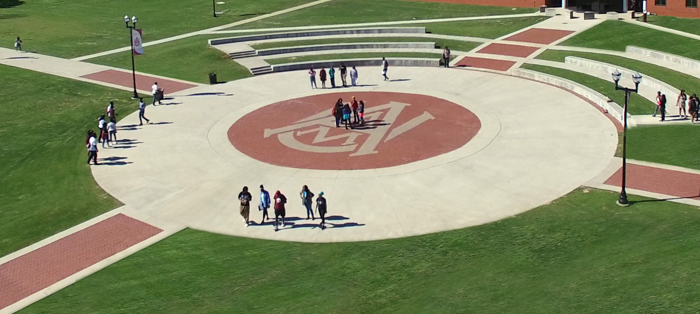Research Projects
WTARS Dekalb Corn Yield Report 2018
Biomass – Miscanthus, Switchgrass
Variety Trials – Canola: evaluation of winter canola varieties in collaboration with Kansas State University; Field corn, Sweet corn and Soybeans: yield trials of field & sweet corn, soybean (planting dates) in collaboration with Bayer Crop Science;
Herbs, Spices & Medicinal Plants – Turmeric, Basil, Hibiscus (Sorrel), Non-traditional vegetables and herbs;
Soil Health & Climate – Hydrology, Carbon monitoring & sequestration, Tornado tracking, Alabama Mesonet;
Small Ruminants –
- Demonstrate effective pasture management and performance of co-grazing meat goats and hair sheep;
- Evaluate variety of seasonal forages and legumes;
- Evaluate average daily gain among individual animals and species;
- Make research findings more visible and disseminate practical information about sheep and goats through on-site workshops, field days, and tours;
- Demonstrate growth of stocker meat goats and hair sheep under mixed- species grazing;
- Demonstrate forage utilization by stocker meat goats and hair sheep under mixed-species grazing;
- Demonstrate integrated parasite control strategies used in stocker meat goats and hair sheep under mixed-species grazing; 8) Demonstrate potential economic advantages of stocker meat goats and hair sheep production under mixed species grazing.
Forestry & Agro-Forestry - Forestry research conducted at the Research Station includes the following studies:
- Sweetgum and American chestnut growth study. The sweetgum was thinned using three levels of intensity. We are now studying the growth and sprouting of the trees. We also under-planted American chestnut using three shade levels under the sweetgum and we used three levels of foliar fertilization. Led by Dimov.
- Hardwood agroforestry study and invasive species control study. The hardwood agroforestry plot contains a mixture of four tree species, one of which is non-native invasive. We are examining the growth of the different species and testing the survival of the invasive species after treating it with high-intensity directed fire applied for three different lengths of time during three different season. Led by Dimov.
- “Common garden” experiment. Trees from ten species are planted on this site and in a mirror site in Florida and Rhode Island. The trees from each species come from seeds collected throughout the geographic range of distribution for that species. Led by Dimov.
- Pine agroforestry study. Two loblolly pine clones are planted at high density (plantation
settings) and low-density (agroforestry settings). Tree survival and growth is followed.
Various agricultural crops have been getting planted in the agroforestry planting
by Cebert.
Dr. Ibrahim and others also use these plantations for testing the growth of various grasses, the growth of grazing animals in open conditions and in the conditions of the agroforestry setup, as well as the soil characteristics and how they are modified by the trees. Led by L. Dimov, the animal and grass/soil experiment led by Dr. Ibrahim and others. - Privet control study. Privet is a non-native invasive species. We are testing the effect of high-intensity directed fire applied in different seasons on the mortality and re-sprouting of privet. Led by L. Dimov.
- Pine growth study. A loblolly pine growth study established by George Brown.
- Virginia pine study. A Virginia pine seed production study established by Dr. George
- Brown Sedimentation study. A study established by Callie Schweitzer from the USDA Forest Service.
In order to view PDF files on your computer, you must have a PDF reader program installed. If you do not already have such a reader, you can download a free reader at Adobe's website: Download Adobe Acrobat Reader Software

 Skip to content
Skip to content